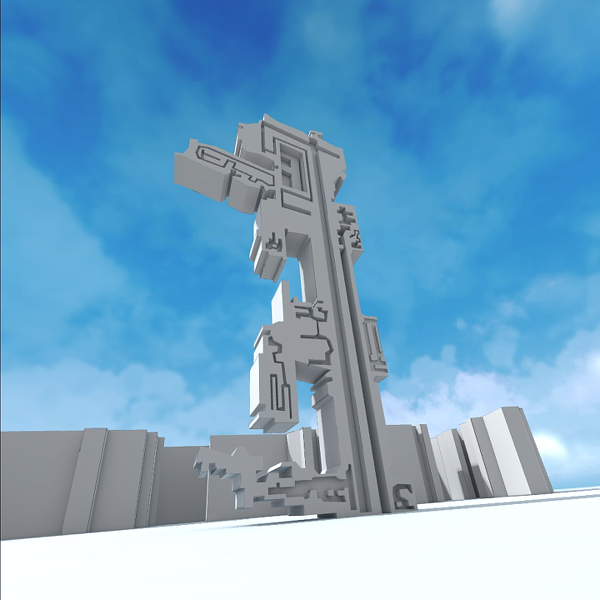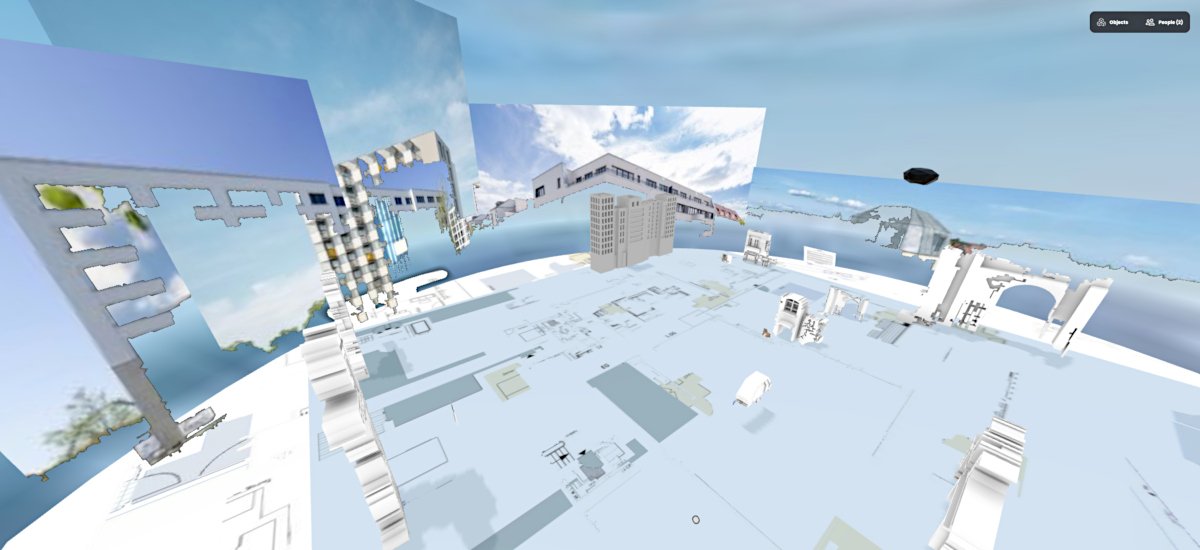Immersive virtual reality artpiece created out of the results of the data harvesting from real estate ad sites and the CAD data of the artefacts for 3D printing, another media- and even reality transfer. The audience has the chance to dive into the surreal world of the results of machine learning, with huge architectural artefacts hovering of their heads and mobile cities moving closer on their path of gentrification. The sound design plays an important role to create the overall mood of the virtual reality.
By the usuage of the self contained VR headset Oculus Quest no cables are attached unlike with other headsets and the spectator can move around freely in a defined space within the exhibition. The first iteration was implemented as a native Oculus Quest application with the 3D engine Unity in 2019 and first shown on a headset 2020 on the first soloexhibition of The Big Crash at Spanien 19C in Aarhus, Denmark. Further headset showings was Rencontres Internationales Paris/Berlin in those two cities 2022 but also included in the Sound Campus Metaverse exhibition at Ars Electronica 2020 Linz, Austria. A small WebGL version which can be viewed in web browsers for The Price Of Berlin was programmed 2020 with the 3D engine Godot, link for viewing is on
The Price Of Berlin page.
Later additionally a version for the multiuser WebVR system Mozilla Hubs was created which can be viewed within a regular web browser but also with VR headsets on
https://hubs.mozilla.com/ufU2mgo/the-big-crash. The Hubs version was exhibited several times, so i.e. at Piksel Festival 2020 Bergen, Norway, ICMC 2021 and KP22 Aarhus, Denmark in 2022.
Malte Steiners use of VR and 3D engines in artistic concepts date back into
the late 90s where he experimented with VRML multiuser artpieces. In the 2000s he used 3D engines for
live visuals in his music projects and also in interactive art installations like
First Person Spam from 2005 and
deStatik from 2009.



